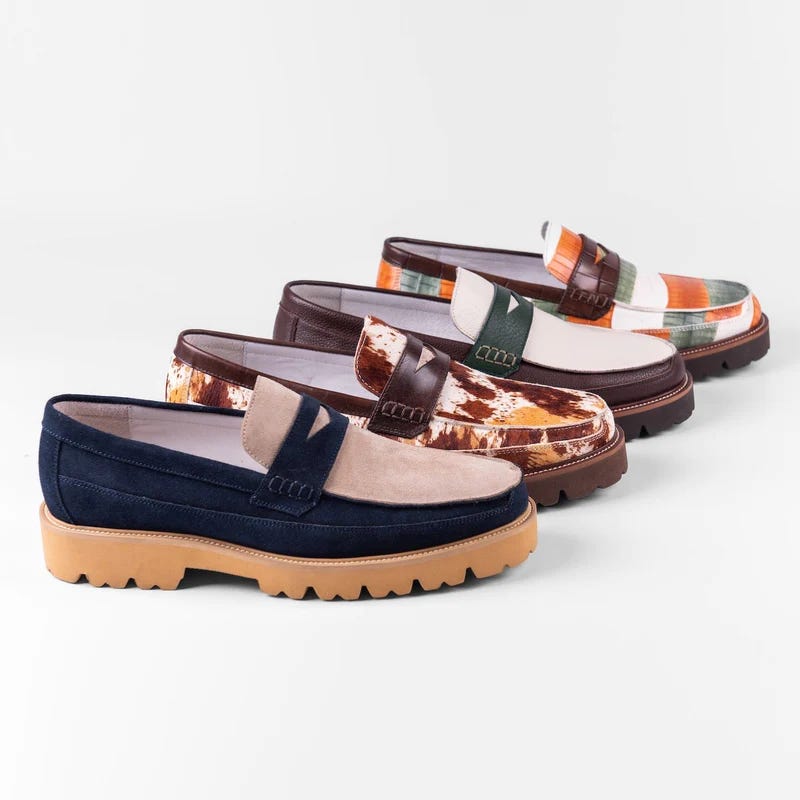How Stone Island came to be
How a luxury Italian brand was adopted by football hooligans in England, to its commercial rise in the United States 🧵 🇮🇹
Lug sole loafers for Spring

Something I think about often is how brands like Ralph Lauren, Stone Island, The North Face, and many others are tied as much to the aristocracy as to the subcultures of people who weren't "meant to" wear them. This is what makes clothing so wonderful—that what we wear can be influenced by people from every creed and walk of life.
Stone Island has always been connected to subcultures. Albeit unintentionally...
In some ways, Stone Island is to English hooliganism what Ralph Lauren was to hip-hop and graffiti artists in Brooklyn in the 80s/90s. They repurposed those products for themselves, influencing much of modern fashion today.
This is the story of Stone Island, a brand founded in 1982 by Massimo Osti—also the founder of C.P. Company, another iconic Italian brand in football culture. The goal for Stoney was to design high-quality, functional sportswear for men, with an emphasis on technical fabrics and innovative designs.
But before the English discovered these jackets, an Italian youth community—called the Paninaros—created an obsession with wearing the brand, along with other brands like CP Company, Moncler, and Levis in the 80s.
Above all, these pieces were worn out of a deep admiration for American culture.
Stone Island was a marquee piece in this community, and in the late 80s/early 90s, it made its way west.
The British originally discovered it while traveling around Europe to support their respective clubs in different countries. It quickly developed a cult following among the "terrace casuals," groups of ultra-footy fans who wore fashion labels instead of their club's colors.
Casuals were synonymous with hooliganism. And hooliganism was a huge problem in English football.
It didn't take long for many notorious hooligan "firms" (football fans) to adopt Stone Island as part of their match-day uniform. Groups like the Birmingham City Zulu Firm were early adopters of this movement.
More broadly, Stone Island was one of many brands in the terrace casuals uniform. Fred Perry, Adidas, Fila, Ralph Lauren, and others were also in rotation during that era.
But Stoney was paramount. If you want a deeper understanding of just how crazy this world was, read this article from The Athletic featuring an “ex-casual” who left the hooligan life in the 80s. Check The Athletic’s cover photo.
Back to my initial comment about Ralph, Stone Island and hooliganism are connected to the fact that the brand was expensive and "not meant for them."
Wearing Stone Island was a flex, a status symbol.
One thing led to another, and the brand began taking over football stadiums, part of the football casuals movement. Stoney even got banned at select football grounds in England in the 90s, increasing its appeal among hooligans, who saw the ban as a badge of honor.
Over the following decades, Stone Island obviously distanced itself from the violent association with hooliganism, and the brand expanded into other clothing offerings and markets.
Like across the pond in the US.
The brand’s commercial rise in the US was gradual, capitalized in 2014 when Supreme teamed up with Stoney. This— in many ways—signaled a turning of the tide. The Italian brand was shifting from subculture to celebrity, cementing its connection to the commercial rise of streetwear.
Drake played a huge role in this shift too, along with guys like Travis Scott and ASAP Nast.
New Balance teased their newest drop with Stone Island on a pair of 574s. For many Americans, affinity with Stone Island is commercial.
But, for many people in the UK, it will always be associated with a darker time in the country's football history.
















Great stuff🙌🏽